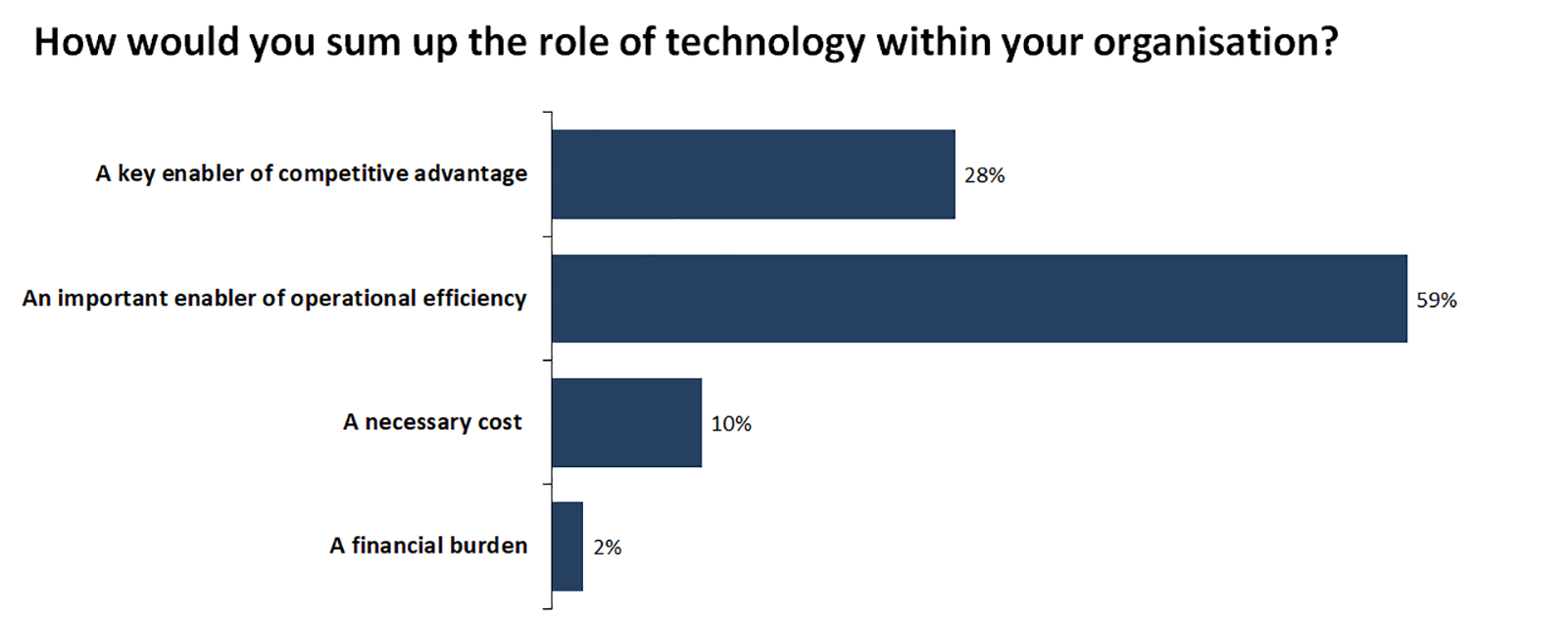Thankfully, the days when IT was seen simply as an unwelcome but necessary cost are behind us. As a recent survey by Freeform Dynamics (June 2017) discovered, finance directors, managers and controllers in small and midsize businesses (SMBs) today are much more likely to view IT as an important enabler of operational efficiency.

The challenge for IT teams is to move the conversation on from cost and efficiency towards technology’s role as a key enabler of competitive advantage. This is essential for the business, but it means you must keep up with both the business’s needs and with technology developments, and that’s no mean task when you don’t have the resources of a large enterprise behind you.
Take the business view
It is not hard to understand why most SMB managers see technology the way they do. IT has boosted efficiency and cut costs in almost every area of the business, but once in place it just needs periodic updates to the software and hardware. The presentation has changed, and yes, some vertical applications have seen huge evolution, but for the most part an appropriately-skilled user can look up a part number or crunch numbers as readily today as they could 20 years ago.
Things are changing now though, and a lot of the change is driven by an area of technology that gets too little attention, namely data storage. Even an exciting area such as mobile would not have got as far as it has if smartphones still relied upon one-inch spinning hard disks, rather than on huge amounts of fast and resilient Flash storage.
More importantly, the developments in data storage are not just evolutions in technology: they are genuinely transformational. Their ability to drive and enable business change is what matters when you need to make the case for a storage-related investment, especially as many people outside IT do not fully understand the technologies involved anyway.
So if your requests for storage investments are too often rejected or deferred, you probably need to pitch much more from the business perspective – aligning your requests with business objectives, to use the jargon. That means explaining why they matter and how they will contribute in three areas which are key to business-side decision makers:
Supporting business growth and development
The business objectives include driving for more customers, more market share, greater profit and so on, and a modern storage environment is important for properly supporting and enabling this. The challenges are how to cope with more users, more transactions, and more and richer data moving around. Explain how your proposed investment will support or drive that, for example by scaling flexibly and smoothly, and performing reliably and predictably.
Keeping the business running safely and securely
How will the storage investment support not only the need for business continuity but also the many other demands that SMBs face now? For example, reliability and data security are essential not just for regulatory compliance but also to protect the reputation of the business and brand.
In turn, the business requirement for security means that storage systems must be able to handle the encryption workload comfortably, while reliability feeds through to the likes of disaster recovery. It also means you must plan for storage beyond the datacentre: if the business wants that flexibility and mobility, then you must express the need to mitigate the related risks in language that the business understands.
Managing costs, resource and overheads effectively
IT needs to add value to the business, instead of being merely ‘operational’. That means IT staff spending less of their time on administration and other routine activity, and more time being productive, which translates to a need for automated and self-managing storage systems. Managing costs also means data storage that consumes less space and power, and lasts longer with fewer ‘forklift upgrades’, which is why you want technology that is compact, efficient and future-proof, say.
Other aspects to consider with respect to business alignment include the choice of supplier and partner. While newer suppliers have an extremely important place in the technology ecosystem, because they are typically the ones at the cutting edge, they usually focus first on large enterprises and their larger IT capabilities, not on SMBs. Similarly, single-product companies tend to take a one-size-fits-all approach.
On the other hand, while big brands can provide reassurance and a broad product range, can they also provide you with the support and guidance appropriate to both your local needs and your existing skills and capabilities? Can they empathise with your business and will they stand by their product for years to come? That’s not to say they can’t and won’t, but it is a question to consider.
Perhaps more importantly though, from the business’s point of view you are going to need an established local partner who understands both your industry and the technology, and who is geared up to support SMBs. They in turn need to be working with a reliable and mature vendor who is big enough to provide a range of both technology and, perhaps more crucially for the business decision, purchasing and licencing options, while at the same time care about their customers’ success.
Aligning IT with the business is one of those things lots of people talk about, and which makes perfect sense when you think about it. What IT – and the business side – mustn’t forget is that it is not just about operations and applications, it is all the other things that go into building successful IT too.